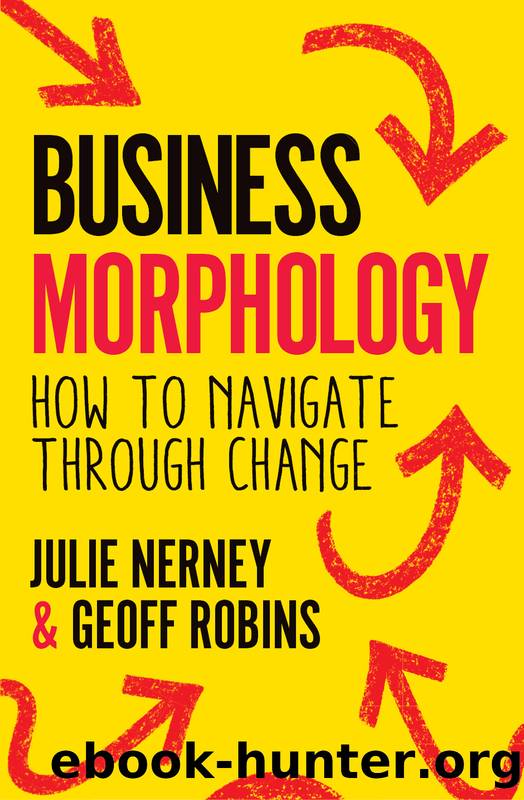Business Morphology by Julie Nerney

Author:Julie Nerney
Language: eng
Format: epub
Publisher: Practical Inspiration Publishing
Published: 2023-11-15T00:00:00+00:00
The plan within the plan: post integration
The post integration plan element of the Map is where you either secure or destroy value. As the case study above describes, done badly, the value and benefits of pulling this lever can evaporate right before your eyes.
You can design the framework for this plan ahead of completing the deal, but a large part of the detail will need to be fleshed out once the transaction is done. This is because although due diligence will minimize your risk and increase your odds of success, it wonât give you access to the finer details and nuances which you need to make your post-integration plan really deliver.
Itâs no different to any other major purchase. When you buy a house you view it more than once. You get a survey done. You might even go back to measure up for fixtures and fittings. You decide that you have chosen the best target for your requirements. Youâve done your due diligence. Youâve gathered enough information to prepare for the move. But then you move into the house and find that the door to the bathroom sticks, the floorboards on the landing are creaky, or there was an unexpected opportunity to convert the loft. You need to live in the place to understand those nuances, and it is no different when it comes to your integration plan.
Integration plan, scope and pace
There is a school of thought that post-merger integration plans need to be executed quickly in order to preserve value for the acquirer, and reduce uncertainty for the people within both organizations. And to a degree, we have some sympathy for that perspective. Metaphorically tearing the plaster off quickly can be the right way to go. But we also believe that it is important that these activities follow the mantra of do it once and do it right. Get this wrong, and youâve wasted your (or someone elseâs) money.
If you are to consider new organizational structures, operating model changes or consolidation of any infrastructure â be it physical, technological or data â it is wise to do so with a level of validation, rather than based on the assumptions made through due diligence and the transaction itself. You need to apply the same thinking and conscious choices that we set out in Chapter 2 across the three planning axes and strike the right balance between pace and risk mitigation. Especially when it comes to bringing people with you, who will naturally feel unsettled.
Key things to consider across the combined entity when you build your post-integration plan are:
⢠How will you evaluate the relative efficiency of the operating models?
⢠How will you evaluate the relative strengths and capabilities of individuals and teams?
⢠How will you understand the new customers and markets you have acquired?
⢠How will you learn about the reputation associated with the brand you have acquired?
⢠How will you assess the culture of the organization you have acquired?
The degree with which you need to do this is entirely dependent on the structure of the deal and how you envisage value being created.
Download
This site does not store any files on its server. We only index and link to content provided by other sites. Please contact the content providers to delete copyright contents if any and email us, we'll remove relevant links or contents immediately.
The Pocket Small Business Owner's Guide to Negotiating by Richard Weisgrau(732)
The Little Big Small Business Book by Micah Fraim(611)
1517 by Marshall Peter;(405)
Accounting for Beginners: A Simple and Updated Guide to Learning Basic Accounting Concepts and Principles Quickly and Easily, Including Financial Statements and Adjusting Entries for Small Businesses by Ruell Warren Piper(373)
J.K. Lasser's Small Business Taxes 2018 by Barbara Weltman(367)
Accounting 101: Bookkeeping for Small Business Made Simple. How Accountants manage their Analyst Role in Solving business problems. Identify risks and provide quality by Neel Gaines(357)
J.K. Lasser's Small Business Taxes 2020 by Barbara Weltman(301)
A Visual Guide to Financial Statements: Overview for Non-Financial Managers and Investors by Thomas Ittelson(268)
Learn Bookkeeping in 7 Days by Rod Caldwell(226)
The Farmer's Office by Shanks Julia(222)
Business Morphology by Julie Nerney(118)
